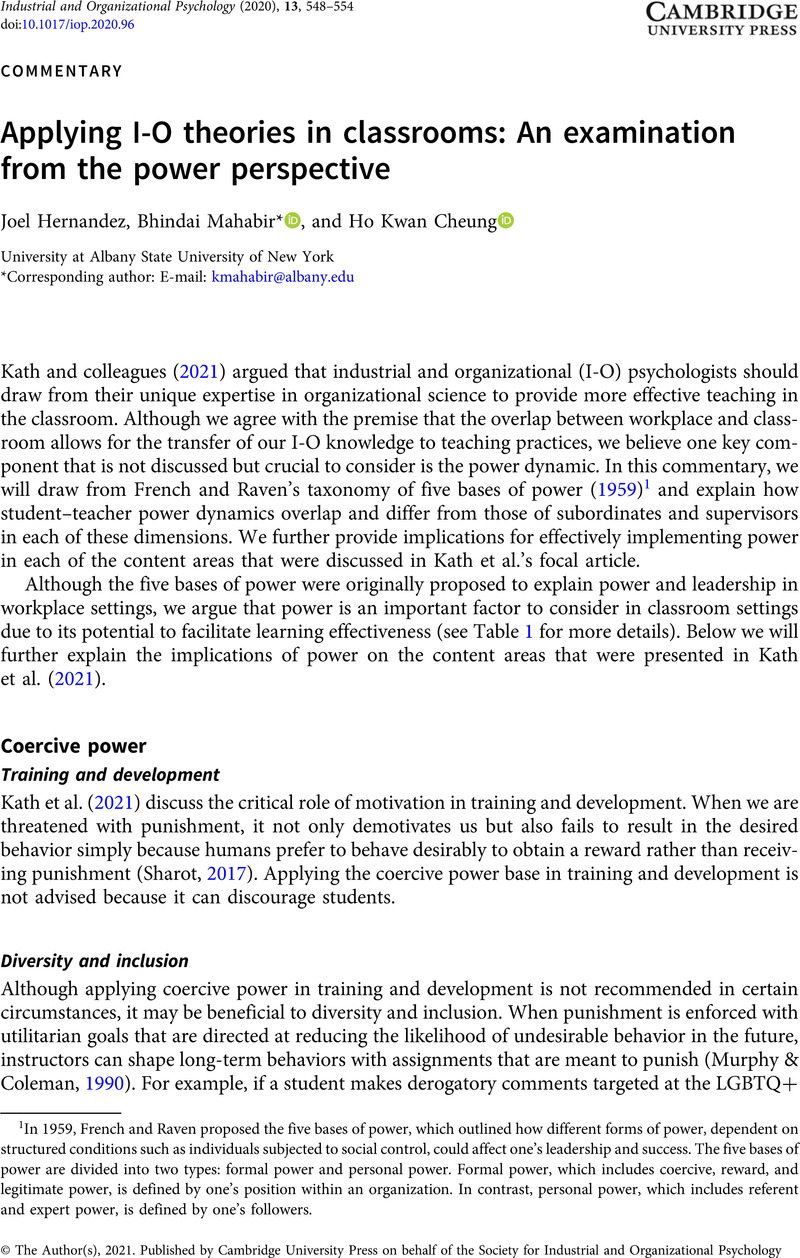No CrossRef data available.
Article contents
Applying I-O theories in classrooms: An examination from the power perspective
Published online by Cambridge University Press: 08 February 2021
Abstract

- Type
- Commentaries
- Information
- Copyright
- © The Author(s), 2021. Published by Cambridge University Press on behalf of the Society for Industrial and Organizational Psychology




